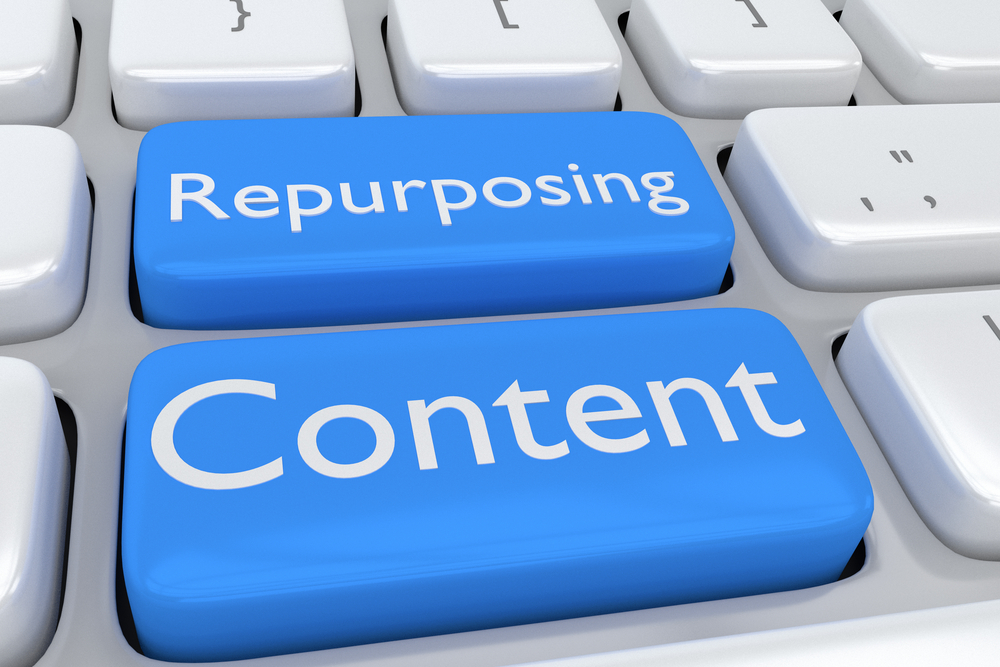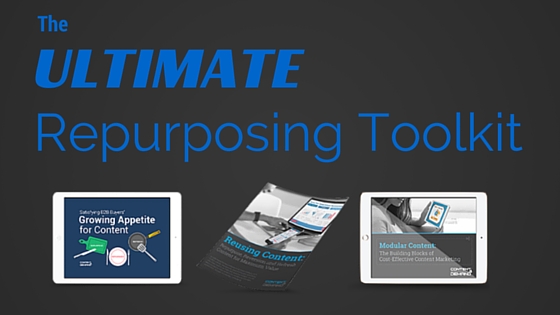When SiriusDecisions asserted last year that content marketers were wasting “tens of millions of dollars a year” on the 60% to 70% of content created by B2B marketing teams that never gets used, my jaw dropped. Waste makes me crazy, and that’s a pretty incredible waste.
That’s why I’m such a huge advocate of repurposing content. We simply can’t keep up with the growing demand for content if we’re creating everything net-new, and there’s no reason to work that hard when strategically repurposing content can get you better results with less time and money.
Think about the resources you invested in your best white paper. You probably interviewed a few sources, you dug up some powerful research and you crafted every message to be sure it would resonate with your target buyer.
Sure, you could start that process all over again, or you could consider that your solid work on that white paper has already laid the groundwork for no fewer than 10 additional content types – everything from whiteboard videos, webinars and interactive assessment tools to blog posts, checklists, email and social media campaigns and infographics.
Let’s look at the key benefits of repurposing your existing content:
- Speed: As I just mentioned, you’ve already invested the necessary time to assemble the data that speaks to your buyers in a white paper, so your research is already done. Now if you identify the components of that white paper that you can repurpose to build a variety of short-form pieces, it will take you far less time than you would need to create each of those new pieces from scratch.
- Variety: Content4Demand’s 2016 Content Preferences Survey demonstrated that a large percentage of respondents are consuming and sharing content that they find visually appealing – things like videos and infographics. The majority of buyers (84%) want more interactive and visual content, and 73% want audio/visual content they can access on demand. Create content in a variety of formats, and buyers can select what they want most.
- Repetition: By echoing your message in a variety of channels and formats, you’re reinforcing the buyer-focused themes that bear repeating for your potential customers. When you do so via different channels, you can do so effectively (and without sounding like a broken record).
- Buyer’s Journey Alignment: You know that early-stage buyers frequently rely on long-form content for the depth of information that helps them identify a business need. But you can also extract the pieces from that content that will resonate with late-stage buyers in a checklist, case study or other short-form asset that speaks to their needs.
- Improved SEO: Websites that are home to plenty of content in a variety of formats can earn higher search-engine rankings.
- Audience-Tailored Content: It often takes just a few changes to an asset written for a broader customer audience to tailor it for a very specific one. Changing a handful of key words, graphics and audience-specific data points can help you leverage an existing piece for a specific industry or persona.
- Timeliness: Just because an asset’s “use by” date has passed doesn’t mean it has no value. In many cases, your aging e-book might just need a facelift. Refresh aging data with the latest research, and swap out stale visuals with a fresh design treatment. Bonus points for adding the interactive components today’s B2B buyers say they want.
- Affordability: The speed with which you can develop an entire series of assets with repurposing means a pretty significant cost savings versus building every asset from scratch. Save those resources for the cornerstone assets that will inspire your next batch of repurposed content.
Don’t waste time getting started with your repurposing projects. If you need help launching an effective content repurposing program, check out The Ultimate Repurposing Toolkit or contact us for additional guidance.
And as always, please share your thoughts on repurposing in the comments section below.
Holly Celeste Fisk is a Client Services Manager at Content4Demand. Known as our clients’ “best friend,” Fisk facilitates meetings and research, and contributes to content and strategy recommendations. She also leads content-creation teams from concept to final design and production, and helps clients plan and implement content assets. During her day-to-day at C4D, Fisk loves diving into consulting projects, such as personas, content audits and gap analyses, and sharing deep, actionable data with clients. In her spare time, she enjoys softball, literary fiction, comedy, “Top Chef” and of course, her adorable niece and nephew. Follow her on Twitter at @HollyCFisk.





